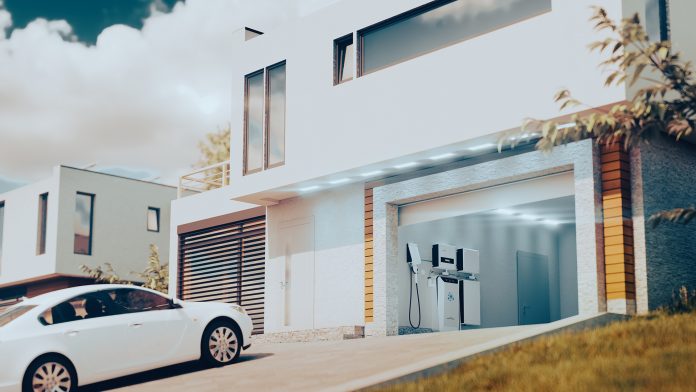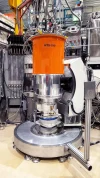The Eindhoven Institute for Renewable Energy Systems is using a System Integration approach, which aims to model future energy systems to facilitate the green energy transition.
To make the transition toward a carbon-neutral energy system, novel renewable energy technologies are developed around the world. But how are these individual technologies going to influence each other? What are the pros and cons of sustainability choices, and how will they affect the entire energy system? To assess these, and other cross-cutting energy system questions, the Eindhoven Institute for Renewable Energy Systems (EIRES) focus area System Integration takes a holistic approach.
To mitigate climate change and prevent the depletion of natural resources, the global energy sector must change from fossil-based to zero-carbon as fast as possible. This future energy system is envisioned to be comprised of an interconnected network of energy producers and consumers, in which energy flows between users and producers. To turn this vision into a reality, an integral view is needed that goes beyond individual technologies. This idea is central to the EIRES focus area System Integration, led by principal scientists Lisanne Havinga and Guus Pemen.
The main aim of this focus area is to model future energy systems, with the purpose of supporting decision-making, identifying bottlenecks, and evaluating the potential of innovative technologies. The integral view requires the inclusion of various energy carriers (chemical, electrical, thermal), various scale levels (from local to international), various sectors (mobility, industry, built environment), and incorporating the production, conversion, storage, distribution, and demand reduction and matching of energy.
The main topics covered in System Integration include the development of smart distribution grids, tools for long-term planning and operation of future electricity grids, design decision support tools for the design of future energy systems, modelling transition and adoption pathways, Artificial Intelligence for energy systems, and digital twinning of energy systems.
EIRES is making millions of houses more energy-efficient
“The Dutch climate ambitions for the built environment alone require a scale-up of far-reaching sustainable renovation of dwellings from a few thousand a year, to hundreds of thousands a year. How are we going to achieve that? And what technologies should be central in this approach in terms of feasibility, affordability, grid stability, and efficiency? At TU/e, we are developing evidence based models to support decision making on different scales, from individual households all the way up to the national level,” said System Integration leader Lisanne Havinga from the Department of the Built Environment.
“The Netherlands contains some 355 individual municipalities that each have to come up with energy transition plans for the neighbourhoods in their municipality. Right now, they are doing this individually, signing 355 individual small contracts with consultancy agencies. As such, the budget for these individual studies is limited, there is no consistency in decision-making, and there is hardly any national support. Even the biggest municipalities are struggling with these choices because they lack the insights needed to make them. Moreover, who ensures that these 355 individual choices of these municipalities add up to what is best on a country level?”
The unique selling point of the models developed at TU/e is that they can handle the intermittent characteristics of renewable energy systems, balance peak demand and peak loads, and have a multiscale character, Havinga explained.
“In addition, we not only calculate the final favorable scenario based on the user’s requirements, but also describe the preferred route towards that end goal. What should be done first to enable the rest? How will existing or new policies influence decisions from different stakeholders involved?”
A good example of a project that includes this regulatory aspect, is the recently awarded MEGAMIND project, led by EIRES researcher Koen Kok from the Department of Electrical Engineering. This project brings together knowledge about energy systems, Artificial Intelligence, and regulation to smartly match an erratic renewable energy supply to a growing demand for energy.
Also, in the NEON programme, led by Auke Hoekstra from the Department of Mechanical Engineering, the social sciences and humanities play an important role. The project focuses on technological aspects of the energy and mobility transition while simultaneously evaluating and testing energy transition scenarios in an integral computer model that models the bottom-up adoption of technologies based on the social acceptance and decision-making behavior of various kinds of people.
How communication with communities will be key to driving the energy transition
“The energy transition is not merely a technological, but perhaps even more a socio-economic transition,” observed Havinga. That is why one of the goals EIRES researchers are aiming for is to enable stakeholders to engage with each other about energy technology in a meaningful way.
“For example, if a community is contemplating the establishment of a district heating network, we can supply them with information about the expected bottlenecks, the required renovations in the dwellings of the neighbourhood, the effect of the integration of heat pumps on grid stability, and the expected division of costs and benefits over all actors involved. By making the pros and cons of different options tangible, political discussions and subsequent choices can be significantly improved.”
But models are not all. TU/e researchers within EIRES also work on new technologies that are indispensable to physically connect different energy systems with different characteristics. Take for example power electronics to convert the electricity generated by off-shore wind parks to the input needed for onshore hydrogen production facilities; new solutions for fast-charging of electric vehicles that avoid imposing peak demands on the net; or conversion and storage technology to enable chemical plants to be powered by intermittent sources like solar or wind energy.
EIRES is collaborating to pioneer sustainable energy solutions
To make sure that the research can make an impact in the real world, extensive collaborations exist with partners from other knowledge institutes, network operators, industry, societal partners, and local, regional and national government. Havinga herself, for example, is working on developing a model, De Renovatieverkenner, for optimising sustainable housing renovations on behalf of the Dutch Government. In this context, she currently collaborates both with 25 social housing associations that own more than half a million houses, and with some of the largest contractors of the country. And TU/e is one of the founders of a regional initiative called the Urban Development Initiative (UDI), where partners from the Brainport region collaborate in finding solutions on, amongst others, the energy transition in the built environment.
With its combination of multiscale models and excess to living labs, EIRES has something unique to offer for entrepreneurs in the energy sector.
Havinga stated: “Our models can be used to create benchmarks for new technology and to gain insights into what is needed for a technology to be exploited to the fullest. And through our connections with UDI, companies can put their technology to the test in actual houses and districts.”
Though EIRES is only a young institute, Havinga is happy with the progress made so far. “New connections between departments have been established and the first large scale interdisciplinary projects have already been granted. The first pieces of the puzzle have been laid. Over the next years, we will build on this foundation. Ultimately, we want to aid society in making the sustainability transition our world needs, based on scientifically sound decisions.”
EIRES focus areas
EIRES focuses on modular systems for energy storage and conversion that show potential for rapid upscaling but still face fundamental research questions. To address these research questions, the research institute is organised in four focus areas, which each bring together and strengthen existing insights, expertise, and knowledge from different disciplines.
In addition to the focus area System Integration, discussed in this article, the other three areas are: Chemistry for Sustainable Energy Systems, with the Dutch Electrolyser as icon project; Engineering for Sustainable Energy Systems, represented by Metal fuels as an icon; and Systems for Sustainable Heat, with the Thermal battery as the illustrative icon project.







